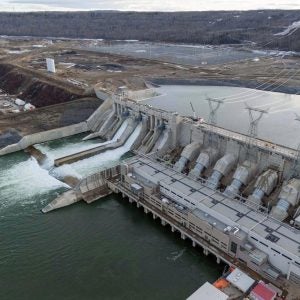A new consortium of Swiss hydropower companies and science firms are working together to help optimise hydropower production through the use of satellite data.
Supported by the Pilot and Demonstration programme of the Swiss Federal Office of Energy (SFOE), climate tech start-up Wegaw and hydrology experts as well as the WSL Institute for Snow and Avalanche Research SLF and nine hydroelectricity companies, are working on the “Defrost for Hydropower” project to improve water supply forecasting in dams across Switzerland’s alpine regions.
The “Defrost for Hydropower” project combines SLF’s snow expertise with satellite imagery from Wegaw’s geospatial technology and Hydrique Engineers advanced modelling skills, in order to more accurately predict water flow into hydro dams up to four months in advance as well as hydrological inflows on a regional scale. These improved forecast insights would support numerous key areas that are important to industry stakeholders, such as hydroelectricity asset efficiency, trading decision making, due diligence and national sustainability efforts.
Wegaw and Hydrique Ingénieurs HJ Sàrl presented the concept to energy industry decision makers, and welcomed nine electricity companies as well as one governmental innovation body to form a new consortium, including: Alpiq Holding; EnBag AQ; EnAlpin AG;
FMV SA (Forces Motrices Valaisannes); Groupe E SA; REPUBLIQUE ET CANTON DE GENÈVE-Département du territoire; Romande Energie; OIKEN; and Services Industriels de Genève (SIG).
The project started in September 2021 and first datasets were presented at the Steering Committee meeting held in December 2021.
The Wegaw team is successfully converting RADAR satellite information to snow water equivalent (SWE) insights and integrating the data into a seasonal hydrological inflow forecast.
Earlier this year, the methodology was successfully tested in two hydrological basins in Valais and the project is now moving towards the hydrological modelling phase after which Wegaw will work on the Economic Impact Assessment stage. This will involve comparing the simulated inflow data with the collected information from the participating hydropower producers in order to identify economic improvement opportunities in production and trading.
“Due to the accuracy of our forecasts and the quality of the available data, our team is on track to complete technical and economic evaluations for the consortium,” said Daria Lüdtke, CTO & Geospatial Technologist at Wegaw. “These new insights could lead to enhancements in electricity trading for the hydropower companies on a seasonal basis, resulting in more competitive energy pricing and potentially a better environmental impact.”

Graphic demonstrating Wegaw’s forecasting capabilities of Snow Water Equivalent over a group of fairly low hydrological basins in Valais, Switzerland. Credit: Wegaw






